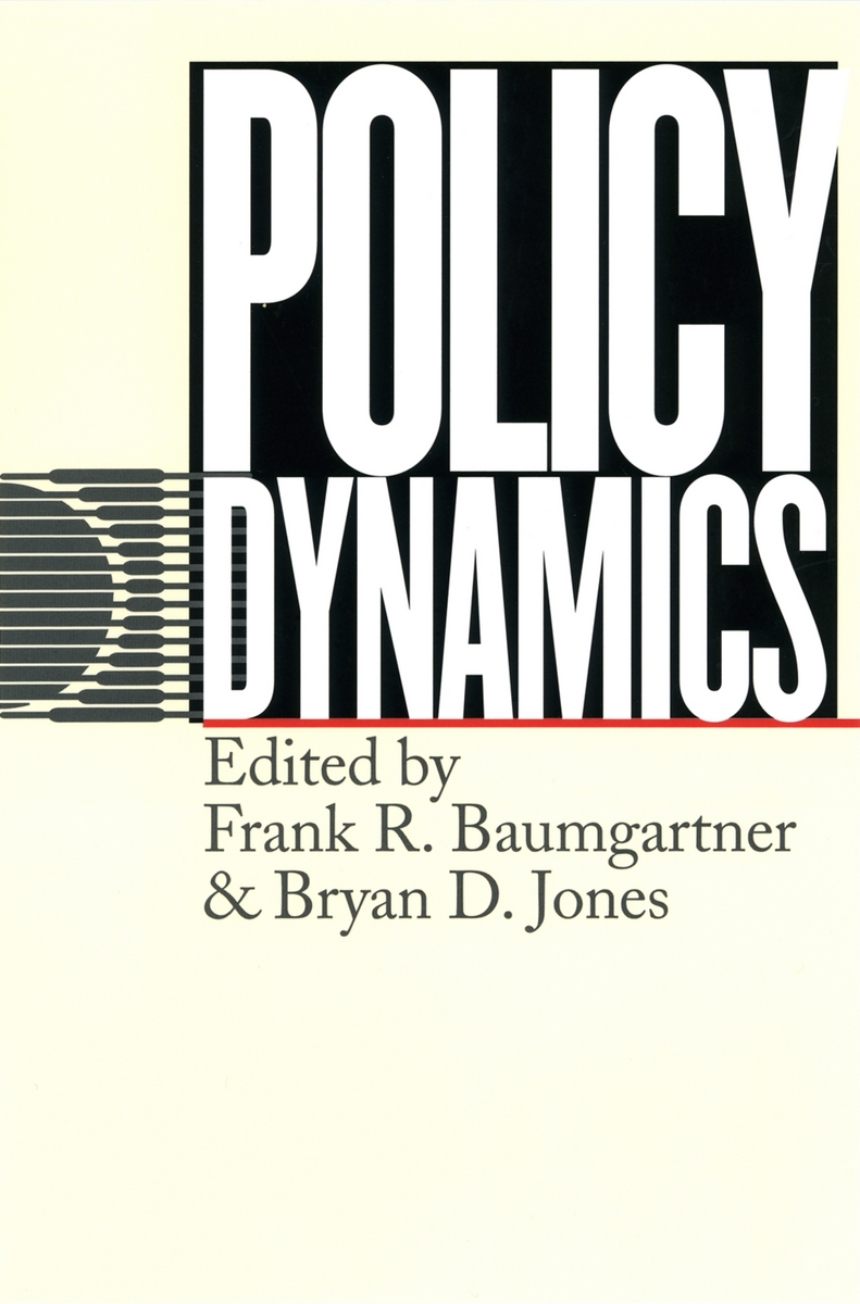Policy Dynamics
While governmental policies and institutions may remain more or less the same for years, they can also change suddenly and unpredictably in response to new political agendas and crises. What causes stability or change in the political system? What role do political institutions play in this process?
To investigate these questions, Policy Dynamics draws on the most extensive data set yet compiled for public policy issues in the United States. Spanning the past half-century, these data make it possible to trace policies and legislation, public and media attention to them, and governmental decisions over time and across institutions. Some chapters analyze particular policy areas, such as health care, national security, and immigration, while others focus on institutional questions such as congressional procedures and agendas and the differing responses by Congress and the Supreme Court to new issues.
Policy Dynamics presents a radical vision of how the federal government evolves in response to new challenges-and the research tools that others may use to critique or extend that vision.
To investigate these questions, Policy Dynamics draws on the most extensive data set yet compiled for public policy issues in the United States. Spanning the past half-century, these data make it possible to trace policies and legislation, public and media attention to them, and governmental decisions over time and across institutions. Some chapters analyze particular policy areas, such as health care, national security, and immigration, while others focus on institutional questions such as congressional procedures and agendas and the differing responses by Congress and the Supreme Court to new issues.
Policy Dynamics presents a radical vision of how the federal government evolves in response to new challenges-and the research tools that others may use to critique or extend that vision.
371 pages | 43 line drawings, 31 tables | 6 x 9 | © 2002
Political Science: American Government and Politics, Public Policy
Table of Contents
Preface
List of Contributors
Part One: Theoretical Beginnings
1 Positive and Negative Feedback in Politics
Frank R. Baumgartner and Bryan D. Jones
2 Studying Policy Dynamics
Frank R. Baumgartner, Bryan D. Jones, and John D. Wilkerson
Part Two: Multidimensionality and Punctuated Equilibrium in Public Policy
3 The Logic of Positive Feedback: Telecommunications Policy through the Creation, Maintenance, and Destruction of a Regulated Monopoly
Michael C. MacLeod
4 The Multiple and Changing Goals of Immigration Reform: A Comparison of House and Senate Activity, 19471993
Valerie F. Hunt
5 Multiple Topics, Multiple Targets, Multiple Goals, and Multiple Decision Makers: Congressional Consideration of Comprehensive Health Care Reform
John W. Hardin
6 The Multiple Goals of Science and Technology Policy
T. Jens Feeley
7 The Changing Focus of National Security Policy
James L. True
Part Three: The Coevolution of the Issues and Structures of American Politics
8 The Changing Public Agenda over the Postwar Period
Jeffery C. Talbert and Matthew Potoski
9 Omnibus Legislation: An Institutional Reaction to the Rise of New Issues
Glen S. Krutz
10 New Issues, New Members: Committee Composition and the Transformation of Issue Agendas on the House Banking and Public Works Committees
E. Scott Adler
11 Using Bills and Hearings to Trace Attention in Congress: Policy Windows in Health Care Legislating
John D. Wilkerson, T. Jens Feeley, Nicole S. Schiereck, and Christina Sue
12 The Changing Agendas of Congress and the Supreme Court
Frank R. Baumgartner and Jamie K. Gold
Part Four: Conclusions
13 Punctuations, Ideas, and Public Policy
Bryan D. Jones and Frank R. Baumgartner
Appendices
References
Index
List of Contributors
Part One: Theoretical Beginnings
1 Positive and Negative Feedback in Politics
Frank R. Baumgartner and Bryan D. Jones
2 Studying Policy Dynamics
Frank R. Baumgartner, Bryan D. Jones, and John D. Wilkerson
Part Two: Multidimensionality and Punctuated Equilibrium in Public Policy
3 The Logic of Positive Feedback: Telecommunications Policy through the Creation, Maintenance, and Destruction of a Regulated Monopoly
Michael C. MacLeod
4 The Multiple and Changing Goals of Immigration Reform: A Comparison of House and Senate Activity, 19471993
Valerie F. Hunt
5 Multiple Topics, Multiple Targets, Multiple Goals, and Multiple Decision Makers: Congressional Consideration of Comprehensive Health Care Reform
John W. Hardin
6 The Multiple Goals of Science and Technology Policy
T. Jens Feeley
7 The Changing Focus of National Security Policy
James L. True
Part Three: The Coevolution of the Issues and Structures of American Politics
8 The Changing Public Agenda over the Postwar Period
Jeffery C. Talbert and Matthew Potoski
9 Omnibus Legislation: An Institutional Reaction to the Rise of New Issues
Glen S. Krutz
10 New Issues, New Members: Committee Composition and the Transformation of Issue Agendas on the House Banking and Public Works Committees
E. Scott Adler
11 Using Bills and Hearings to Trace Attention in Congress: Policy Windows in Health Care Legislating
John D. Wilkerson, T. Jens Feeley, Nicole S. Schiereck, and Christina Sue
12 The Changing Agendas of Congress and the Supreme Court
Frank R. Baumgartner and Jamie K. Gold
Part Four: Conclusions
13 Punctuations, Ideas, and Public Policy
Bryan D. Jones and Frank R. Baumgartner
Appendices
References
Index
